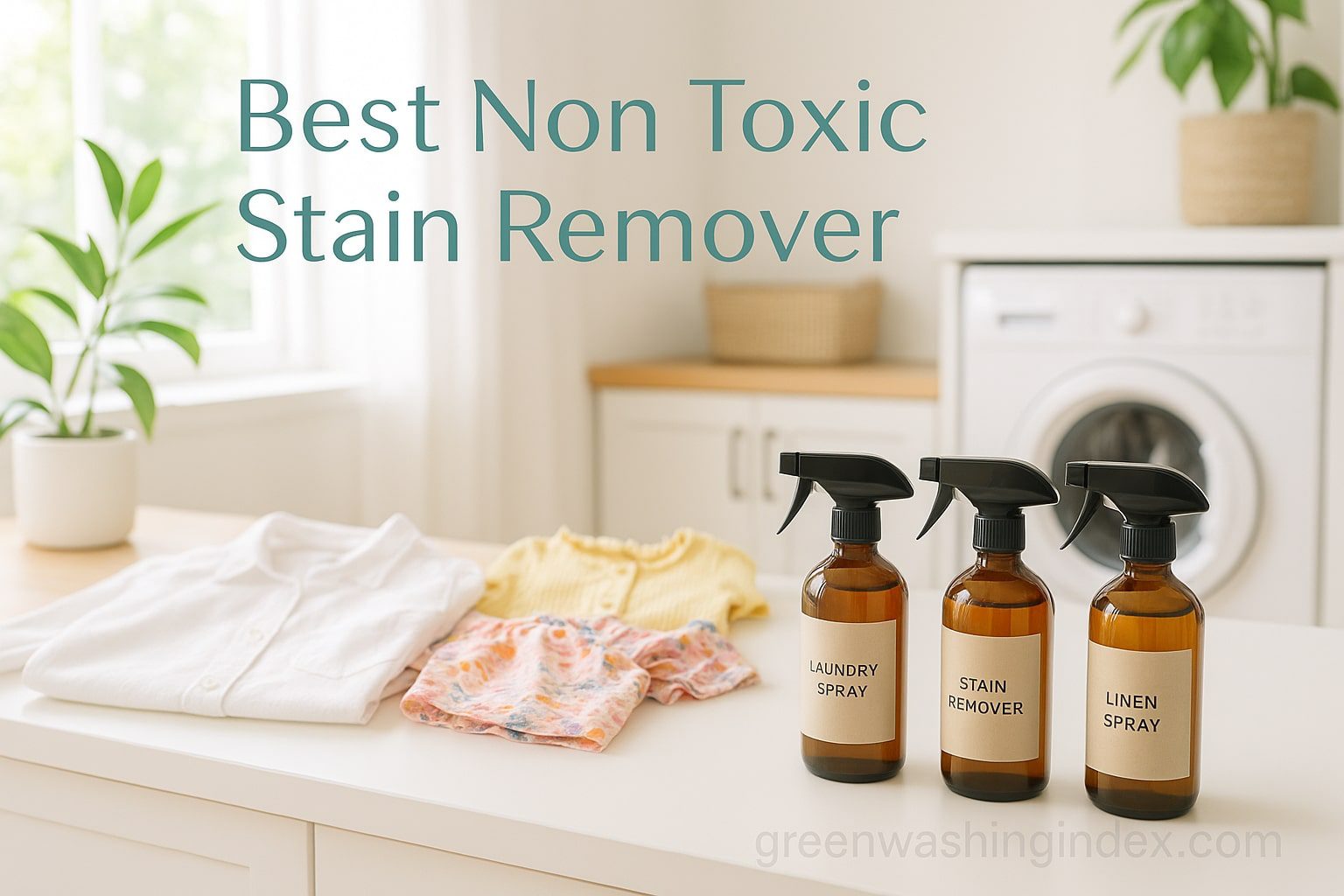
Caring for indoor plants is fun and easy. You just need to know what your plants like and don’t like.
Giving them the right amount of water, sunlight, and food will make them happy and healthy.
Taking good care of your plants can make your home look beautiful and feel happy.
You can learn how to make your plants thrive by knowing what they need and what might be hurting them.
By following some simple tips, you can become a plant expert and make your home a green oasis.
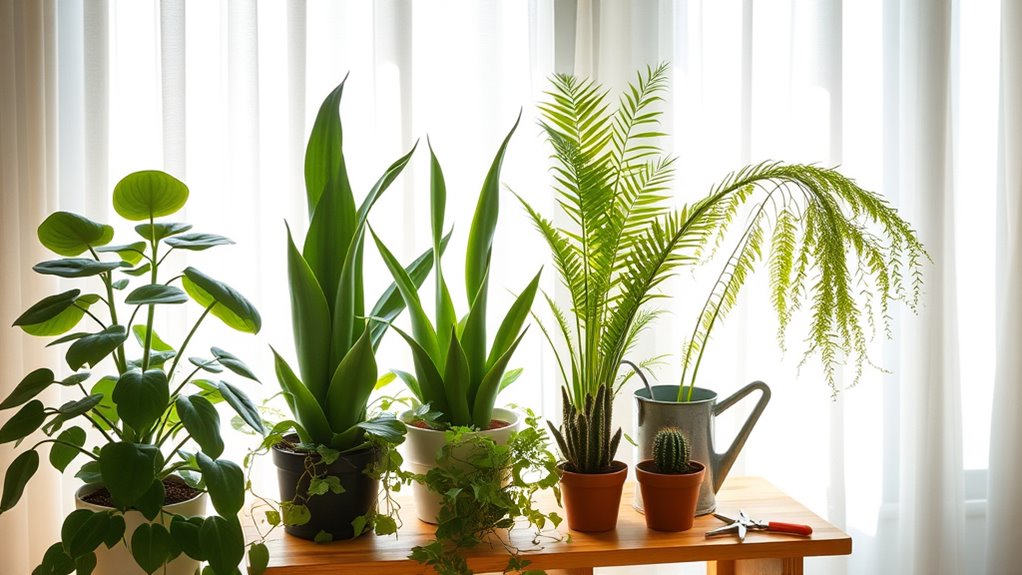
Understanding your plant’s light requirements is essential for healthy growth. Different plants thrive in varying light conditions: low, medium, or bright indirect light. Observe the natural light in your home and place your plants accordingly. For instance, succulents and cacti prefer bright light, while ferns and snake plants can tolerate lower light levels. Confirm to rotate your plants periodically for even growth and monitor them for signs of stress, such as yellowing leaves, indicating they may need more or less light.

Watering is essential for healthy indoor plants, but the right amount and frequency vary by species. Generally, it’s best to water plants when the top inch of soil feels dry. Overwatering can lead to root rot, while underwatering causes wilting. A good rule of thumb is to check moisture levels weekly, adjusting based on seasonal changes and plant growth. Remember, factors like pot size, climate, and humidity also influence watering needs.
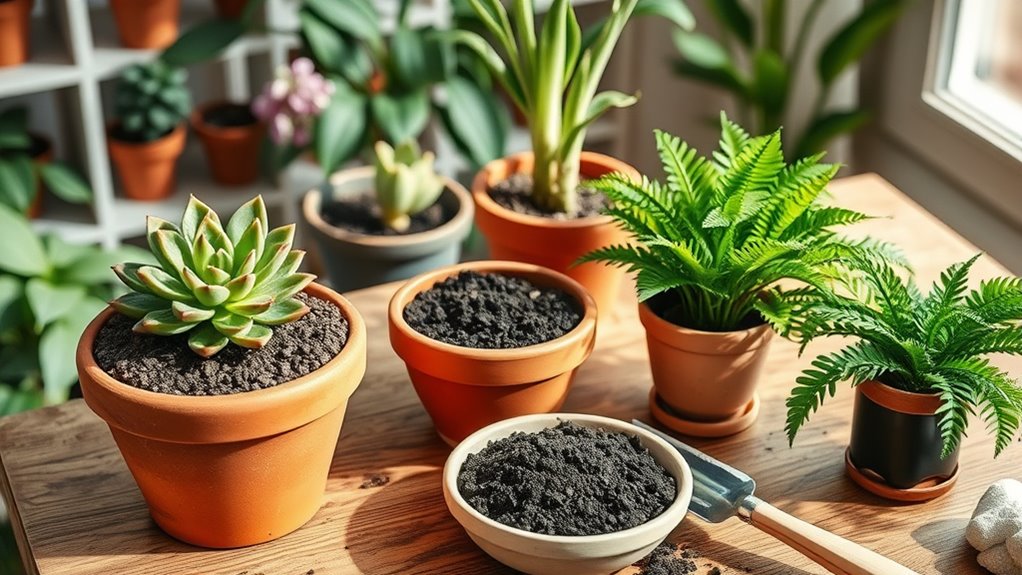
Choosing the right soil for your indoor plants is essential for their health and growth. Different plants have varying soil needs; for instance, succulents and cacti thrive in well-draining sandy soils, while tropical plants prefer rich, moisture-retentive mixes. Look for potting soil that includes organic matter, such as peat or compost, which provides nutrients. Additionally, consider adding perlite or vermiculite to improve aeration and drainage, ensuring your plants receive the ideal environment to flourish.
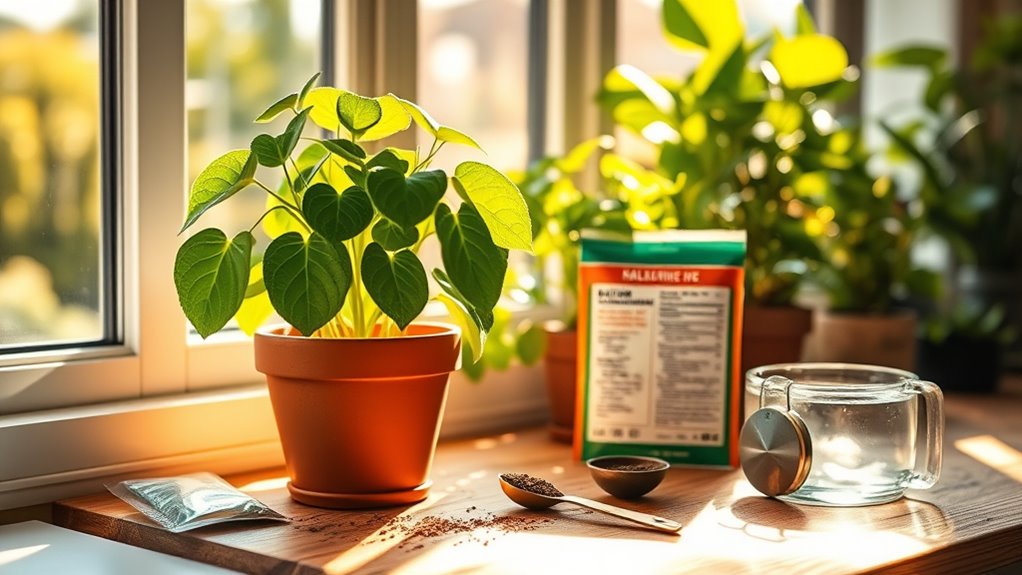
Fertilizing indoor plants is crucial for their growth and health. Generally, it’s best to feed them during the growing season, which typically spans from spring to early fall. Use a balanced, water-soluble fertilizer every 4-6 weeks to replenish nutrients. Be cautious not to over-fertilize, as this can harm the plants. Always follow package instructions and consider the specific needs of each plant, adjusting the frequency and strength of the fertilizer accordingly.
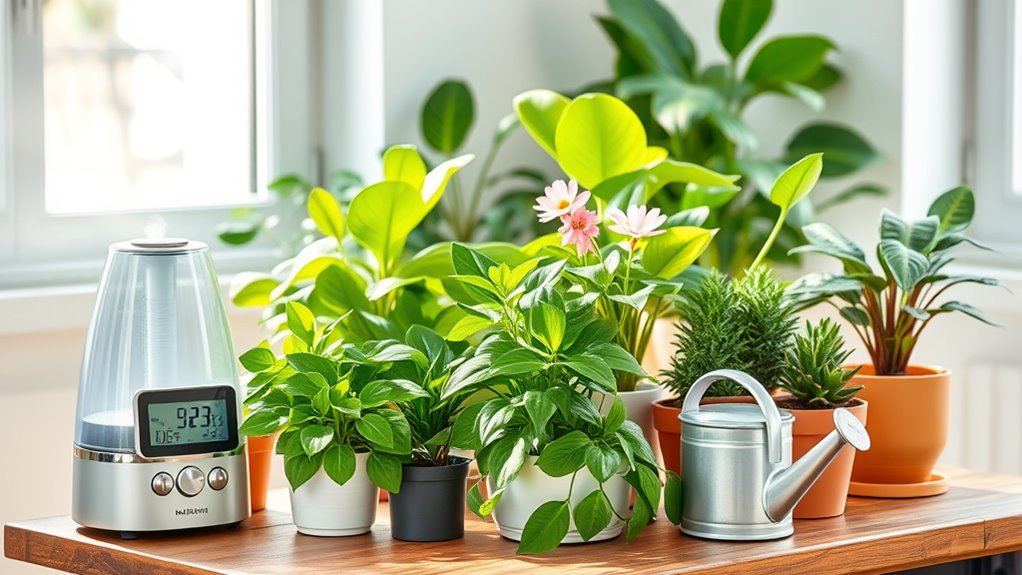
Temperature and humidity are essential factors in maintaining healthy indoor plants. Most houseplants thrive in temperatures between 65°F to 75°F (18°C to 24°C) and prefer humidity levels around 40-60%. Fluctuations in temperature or excessive dryness can lead to stress, manifesting as wilting, yellowing leaves, or pest infestations. To create an ideal environment, consider using humidifiers, regularly misting plants, or grouping them to increase local humidity. Monitoring both aspects guarantees your plants stay vibrant and flourishing.
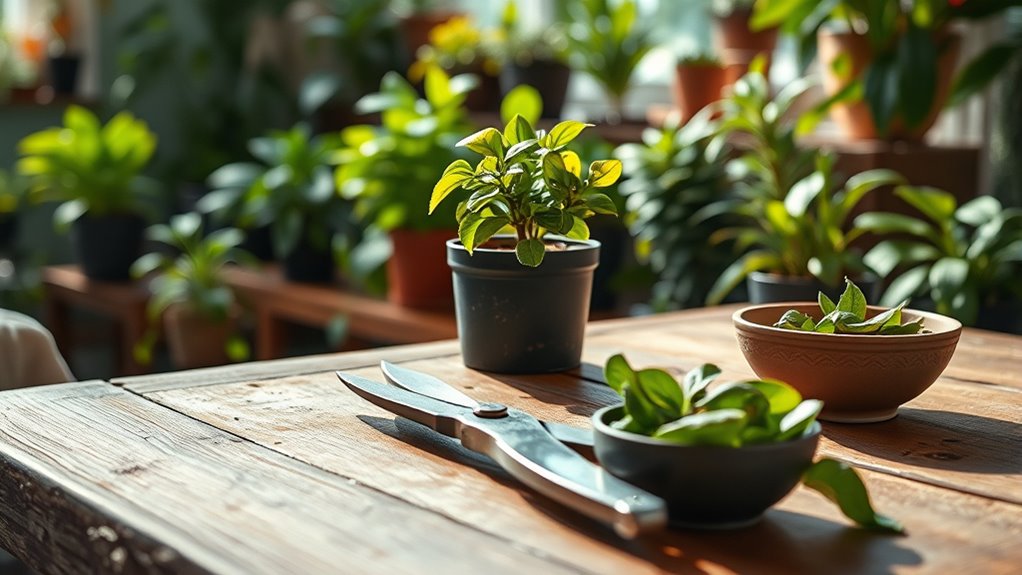
Pruning is an essential practice for maintaining the health and aesthetics of indoor plants. By trimming away dead or yellowing leaves, as well as any leggy growth, you encourage new, vigorous growth and improve airflow within the plant. Regular pruning not only helps prevent diseases but also allows you to shape the plant, enhancing its natural beauty. Whether using scissors or shears, always make sure your tools are clean to minimize the risk of infection.
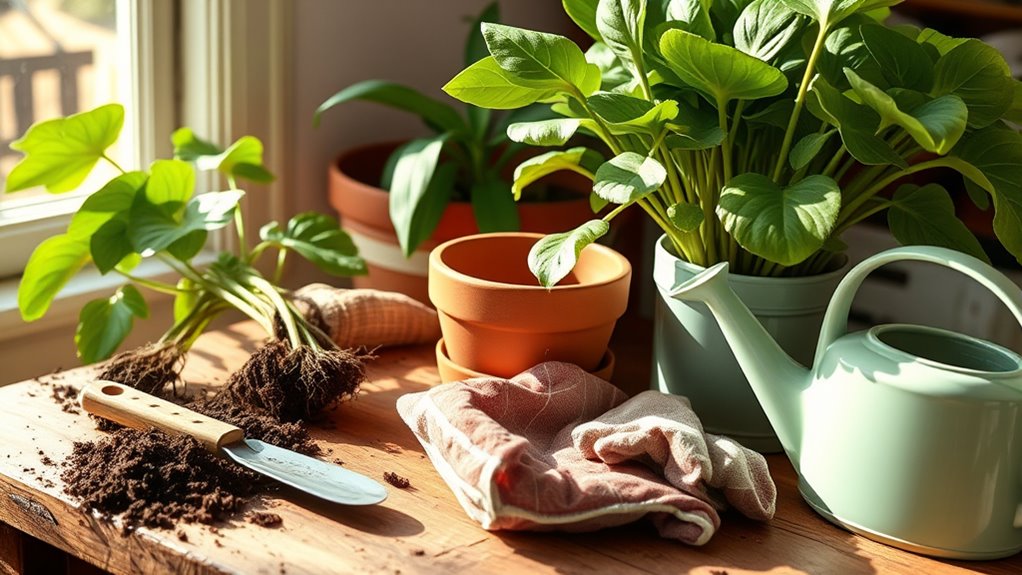
Repotting indoor plants is essential for their health and growth. Typically, you should consider repotting every 1-2 years or when you notice roots growing out of the drainage holes. Signs that a plant needs repotting include stunted growth, yellowing leaves, or visibly cramped roots. When repotting, choose a slightly larger pot, use fresh potting soil, and gently loosen the root ball to encourage new growth. Ascertain proper drainage to prevent overwatering.
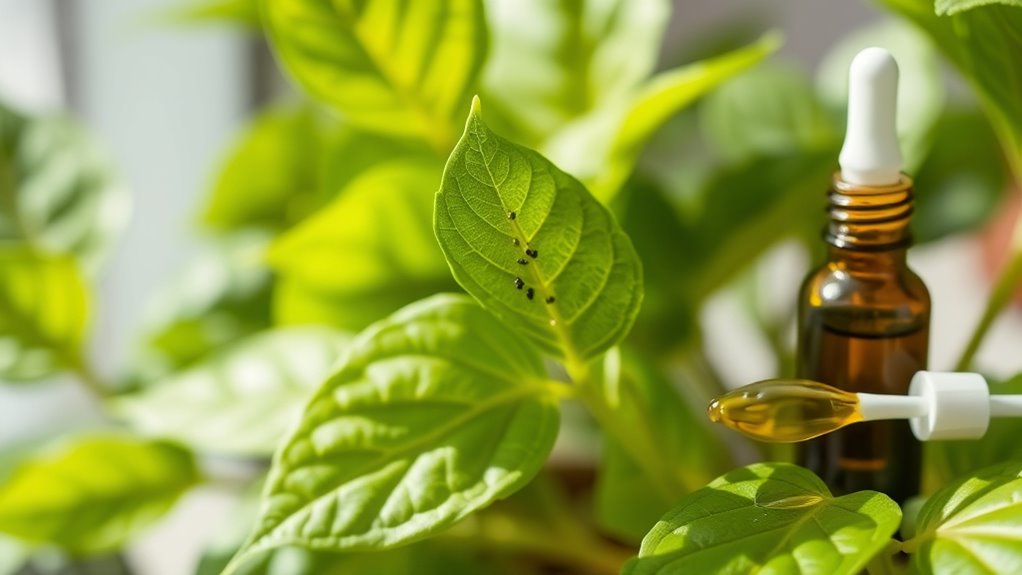
Pest management is essential for maintaining the health of indoor plants. Identifying infestations involves regularly inspecting leaves, stems, and soil for signs of common pests like aphids, spider mites, and mealybugs. Control methods can include natural remedies, such as neem oil or insecticidal soap, as well as physical removal or introducing beneficial insects. Quick action not only protects your plants but also prevents pests from spreading to other areas of your home.
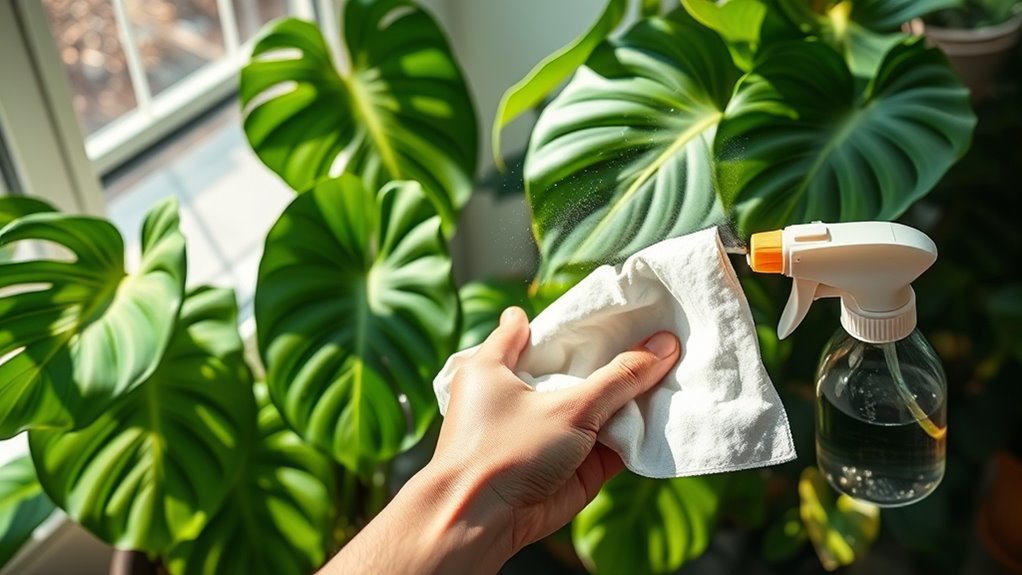
Cleaning and dusting your indoor plant leaves is essential for their overall health. Dust can block sunlight, inhibiting photosynthesis and affecting growth. To clean leaves, gently wipe them with a damp cloth or sponge, ensuring not to damage the foliage. For larger plants, you can use a soft brush or even a gentle shower to remove dust. Regular cleaning not only enhances your plant’s appearance but also promotes better air quality in your home.
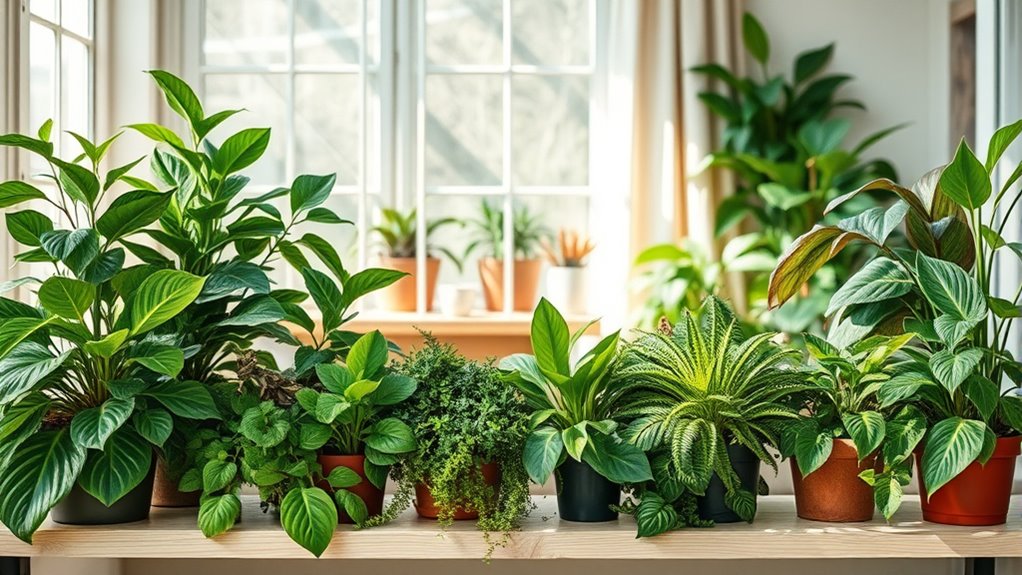
Proper spacing is essential for the healthy growth of indoor plants. Adequate distance between each plant allows for ideal airflow, reducing the risk of fungal diseases and pests. It also guarantees that each plant receives sufficient light without being overshadowed by its neighbors. Additionally, spaced plants can access nutrients in the soil more effectively. By considering the mature size of each species, you can create a thriving indoor garden that promotes robust growth and vibrant foliage.
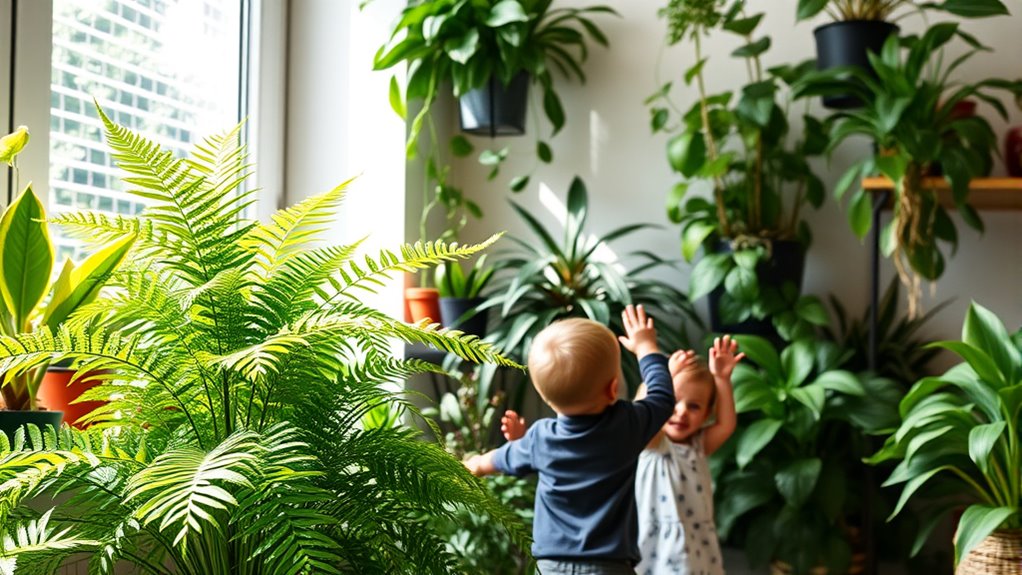
When caring for indoor plants, it’s vital to take into account their toxicity to pets and children. Some common houseplants, such as philodendrons, peace lilies, and pothos, can be harmful if ingested. Symptoms may include vomiting, diarrhea, or irritation. To create a safe environment, research each plant’s toxicity and place potentially harmful species out of reach. Opt for non-toxic plants, like spider plants or Boston ferns, to guarantee a safe space for all family members.
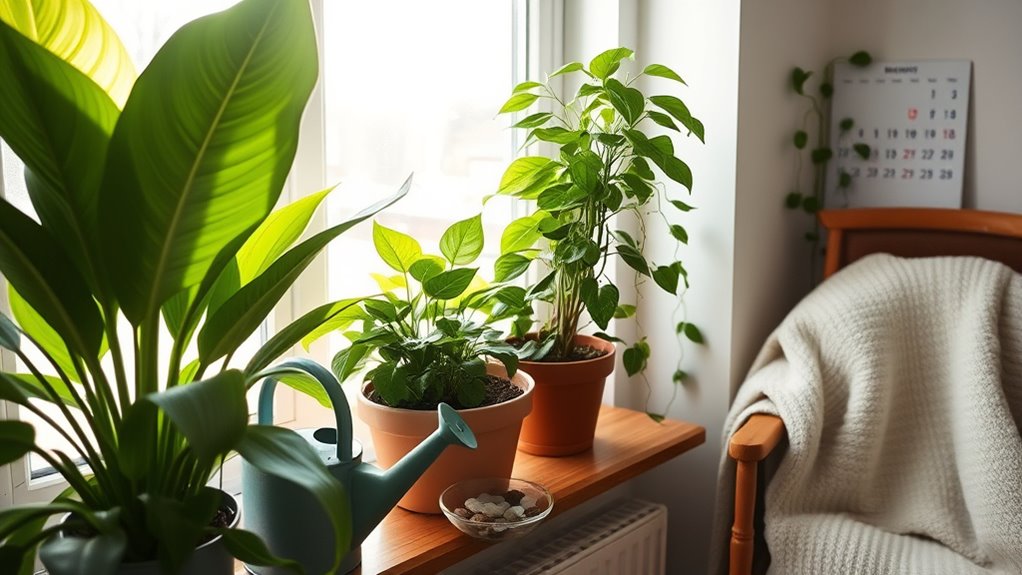
Seasonal care adjustments are essential for the health of indoor plants as they respond to changes in light, temperature, and humidity. In winter, reduce watering frequency since plants typically enter a dormant phase. Conversely, during spring and summer, they may require more water and nutrients to support growth. Additionally, repositioning plants to optimize sunlight exposure during different seasons can promote healthy photosynthesis, while monitoring for pests becomes important as environmental factors shift.
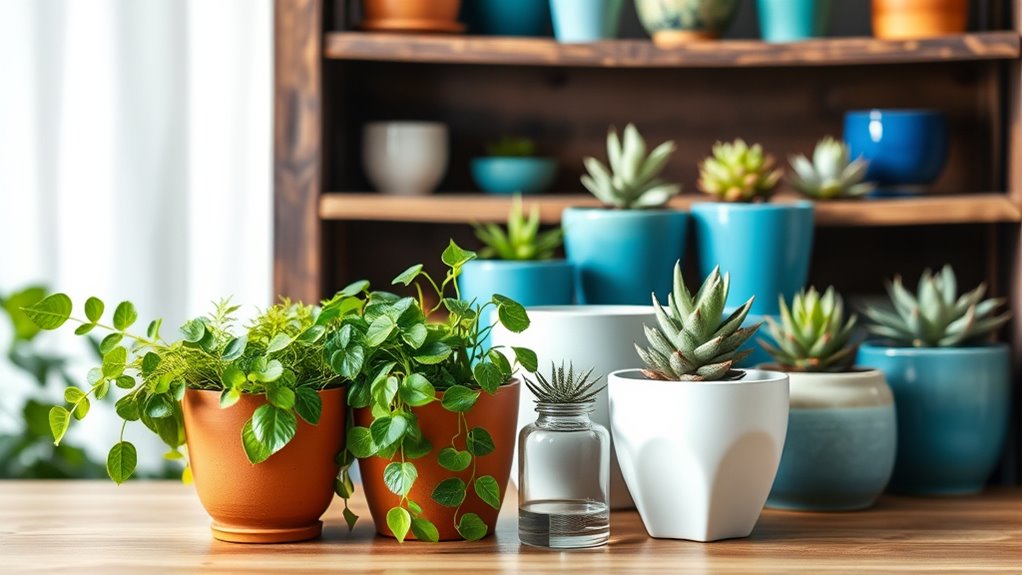
Choosing the right container for your indoor plants is essential for their health and growth. Make sure that the pot has drainage holes to prevent waterlogging, which can lead to root rot. Materials like terracotta allow for airflow, while plastic pots are lightweight and moisture-retentive. Consider the size as well; a pot that’s too small can restrict root growth, while one that’s too large may hold excess moisture. Aesthetic appeal is important too—select containers that complement your home decor!
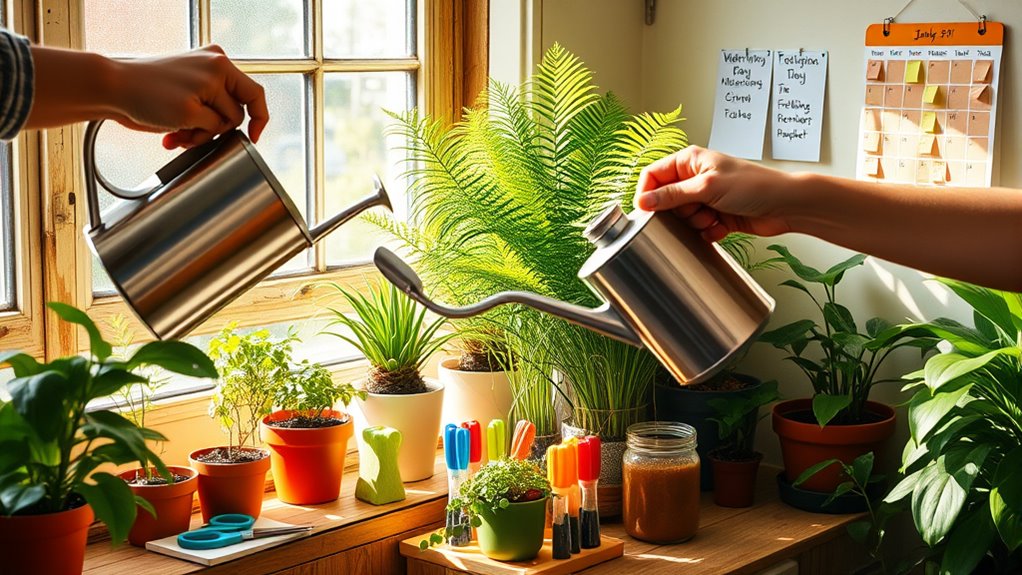
Establishing a consistent care routine is crucial for the health and vigor of your indoor plants. Start by creating a schedule that includes regular watering, fertilizing, and pruning based on each plant’s specific needs. Observe your plants weekly to monitor changes, such as leaf color and soil moisture. Utilize reminders on your phone or calendar to guarantee you maintain this routine, fostering a flourishing indoor garden that thrives on your attentive care.
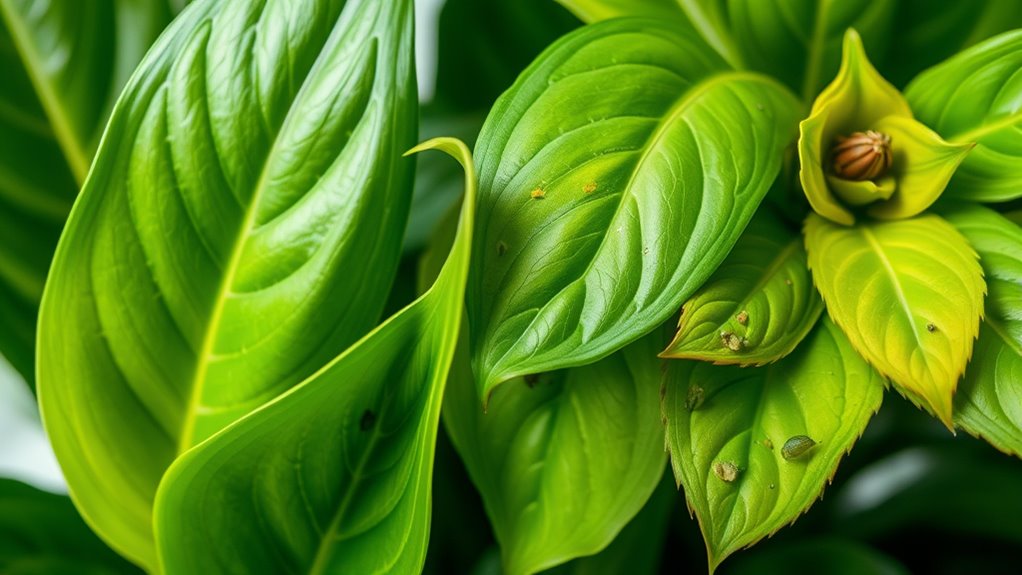
Recognizing signs of stress or disease in indoor plants is essential for their health and vitality. Common indicators include yellowing leaves, wilting, or brown edges, which can signal issues like overwatering, underwatering, or nutrient deficiencies. Additionally, pests such as spider mites or aphids may leave noticeable damage, such as webbing or sticky residue. Regularly inspecting your plants can help you identify these issues early and take appropriate action to restore their health.
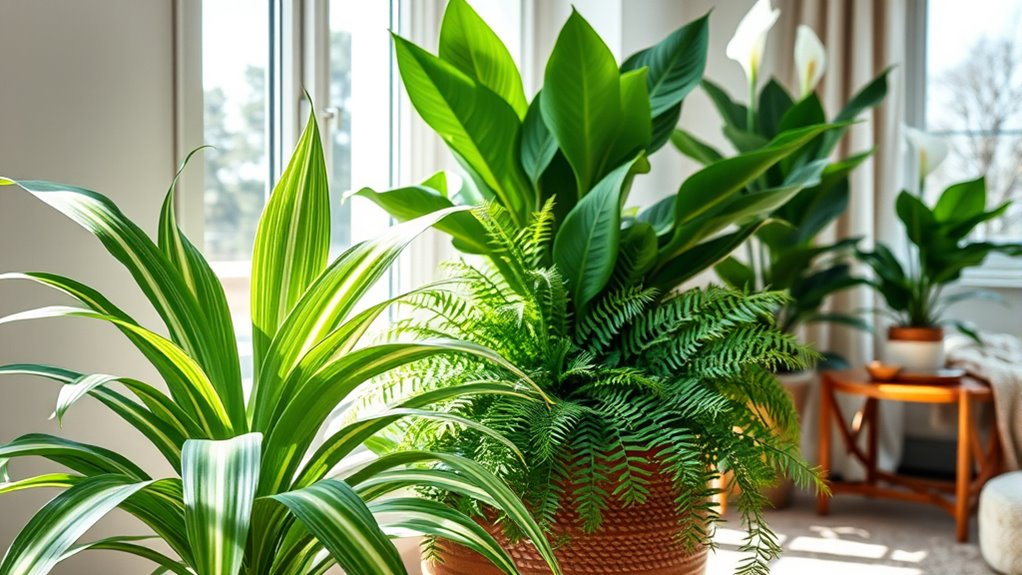
When selecting indoor plants, it’s essential to take into account their toxicity, particularly if you have pets or young children. Non-toxic plants, such as spider plants, Boston ferns, and peace lilies, provide a safe environment while enhancing your living space. These plants not only improve indoor air quality but also add beauty and vibrancy without the risk of harm. Always research and verify that the plants you choose are safe for your home and loved ones.
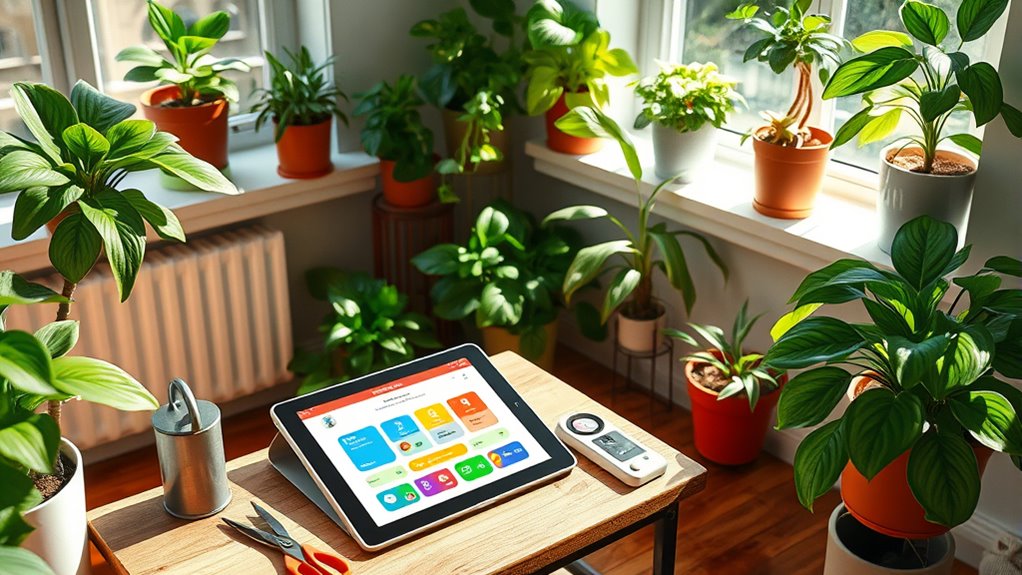
Utilizing plant care apps and online resources can greatly enhance your indoor gardening experience. These tools provide personalized care recommendations based on plant species, enabling you to monitor watering schedules, light preferences, and pest control strategies. Many apps also feature plant identification capabilities and community forums for sharing tips and experiences. By leveraging technology, you can guarantee your indoor plants thrive and flourish, making your gardening journey more enjoyable and successful.
Caring for your indoor plants can feel like nurturing a small, vibrant ecosystem in your home. By understanding each plant’s needs and establishing a consistent care routine, you’ll watch them thrive as if they’re basking in the sun. Keep an eye out for signs of stress, choose the right soil, and don’t forget to use technology for assistance. With dedication and love, your indoor garden can flourish and enhance your living space beautifully.

Don't let aphids, slugs, and caterpillars ruin another plant. Take back control with simple, natural methods that actually work.